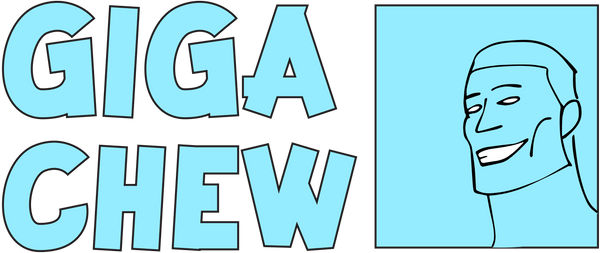Chewing isn’t just for eating; it’s a science-backed method for enhancing jawline definition, strengthening facial muscles, and promoting overall oral fitness. At Giga Chew, we believe in harnessing natural movement to stimulate growth where it matters most. From the structure of the masseter muscle to the role of resistance, this article delves into the mechanics of how chewing contributes to facial muscle development.
Table of Contents
- Key Takeaways
- The Role of Facial Muscles in Appearance
- Why Resistance Matters in Chewing
- The Science Behind Muscle Growth via Chewing
- Benefits Beyond Aesthetics
- The Evolutionary Perspective
- How to Safely Engage in Facial Muscle Training
- Conclusion
- FAQs
Key Takeaways
- Chewing with resistance supports the development of stronger, more defined facial muscles
- The masseter is particularly responsive to consistent muscle training
- Structured chewing enhances both visual and functional outcomes
- Many modern foods lack the density required for proper jaw engagement
- Regular, safe practice can yield noticeable improvement in both aesthetics and strength
The Role of Facial Muscles in Appearance
Facial muscles provide the foundation for expressions, jaw strength, and facial structure. The masseter muscle, one of the strongest in the body, plays a key role in chewing and jaw movement. Strengthening this muscle can lead to noticeable aesthetic benefits.
- Sharper jawline definition: Increased muscle tone enhances the natural angles of the jaw.
- Reduced facial sagging: Stronger muscles help support skin structure and minimise drooping.
- More balanced symmetry: Even muscle engagement promotes a more harmonious facial appearance.
Consistent chewing, especially with resistance, helps activate and define these muscles over time.
Why Resistance Matters in Chewing
Just like other muscles in the body, facial muscles respond to resistance training. Applying deliberate force during chewing activates the temporalis, masseter, and pterygoid muscles, encouraging hypertrophy (muscle growth).
Historically, diets consisted of raw vegetables, fibrous roots, and tough meats, all of which demanded significant chewing force. Modern soft-textured diets lack this natural resistance, which has led to the development of specialised tools that replicate the chewing challenge once provided by whole, unprocessed foods.
The Science Behind Muscle Growth via Chewing
Chewing with resistance introduces mechanical loading, a process that stimulates various physiological responses within the facial muscles. This mechanism mirrors the principles of strength training used for other muscle groups in the body.
- Increased blood circulation in the facial region: Chewing activates muscles that demand greater oxygen and nutrients, leading to enhanced blood flow. This increased circulation supports muscle endurance, recovery, and overall tissue health.
- Activation of satellite cells, responsible for muscle repair and growth: Satellite cells play a critical role in muscle regeneration. When muscles experience micro-stress through resistance chewing, these cells are triggered to repair and rebuild stronger muscle fibres.
- Release of growth factors such as IGF-1, which drive hypertrophy: The mechanical stress from chewing promotes the release of anabolic hormones and growth factors like IGF-1, which directly support the growth and thickening of muscle fibres over time.
When chewing exercises are performed consistently and with appropriate resistance, facial muscles begin to adapt and strengthen, resulting in improved tone and definition, much like the muscular response seen with regular weight training.
Benefits Beyond Aesthetics
The advantages of chewing exercises extend far beyond improved appearance. In addition to enhancing facial definition, chewing under resistance can contribute to several functional and health-related outcomes:
- Greater bite strength and enhanced dental support: Strengthened jaw muscles improve the ability to bite and chew effectively, offering better support for the teeth and surrounding oral structures.
- Improved jaw posture and alignment: Regular chewing activity can help maintain or restore natural jaw alignment, supporting better posture and reducing strain on surrounding muscles.
- Decreased symptoms of bruxism (involuntary teeth grinding): Targeted muscle activation may help reduce tension and overactivity in the jaw, potentially lowering the frequency and intensity of teeth grinding during sleep or stress.
- Stimulation of salivary flow, contributing to oral hygiene and health: Chewing promotes increased saliva production, which plays a key role in neutralising acids, aiding digestion, and keeping the mouth clean.
The Evolutionary Perspective
In early human history, diets consisted of fibrous, tough ingredients that required extensive chewing. This constant effort naturally developed strong jaws and pronounced facial structures. The shift toward softer, more processed foods has significantly reduced the need for jaw engagement, leading to underused facial muscles.
This dietary evolution has led to a renewed interest in structured chewing exercises, offering a modern method to recreate the natural resistance once present in traditional diets.
How to Safely Engage in Facial Muscle Training
Facial muscle training can yield positive results when approached gradually and with attention to proper technique. The following guidelines support safe and effective practice:
- Begin with light resistance to prevent strain in the early stages: Starting with minimal resistance allows the facial muscles to adapt without risk of overexertion. This is essential for avoiding soreness or potential strain during the initial phase of training.
- Increase repetition and duration over time to build endurance and strength: As muscle tolerance improves, gradually extend the length and number of chewing sessions. Progressive overload is key to developing strength and achieving visible definition safely.
- Maintain symmetrical movement to avoid imbalances: Chewing should be evenly distributed across both sides of the jaw to promote balanced muscle development. Uneven effort may lead to asymmetry or overuse on one side.
- Stay hydrated and allow rest between sessions for proper recovery: Hydration supports muscle function and joint lubrication, while adequate rest allows the muscles to repair and strengthen. Avoid back-to-back sessions without recovery time.
- Seek professional advice before starting, especially if discomfort exists: Consulting a dental or orofacial health specialist is advised before beginning any facial training routine, particularly for individuals with jaw tension, previous injury, or temporomandibular joint (TMJ) concerns. A personalised assessment can help ensure safety and effectiveness.
Conclusion
The science is clear: chewing stimulates facial muscle growth in a measurable, effective way. With the right tools and understanding, this natural movement becomes a powerful method for enhancing jaw definition and oral strength. At Giga Chew, we’re passionate about supporting this journey. For clients ready to redefine facial fitness, get in touch with us today.
FAQs
What is the primary muscle involved in chewing?
Chewing primarily engages the masseter muscle, which is one of the strongest muscles in the human body and plays a key role in jaw movement.
Can regular chewing enhance jawline definition?
Yes. When performed consistently with resistance, chewing may help strengthen facial muscles and support a more defined jawline appearance.
Does chewing gum effectively build facial muscles?
Ordinary chewing gum offers limited resistance. For noticeable muscle development, tools specifically designed for facial training are generally more effective.
How soon can results from jaw training be expected?
With regular practice and proper technique, visible improvements may be noticed within 4 to 8 weeks.
Is facial muscle training safe for everyone?
Facial training is typically safe when done correctly. However, individuals experiencing jaw pain or conditions such as TMJ dysfunction should consult a healthcare professional beforehand.
When is the best time to perform jaw exercises?
Short sessions, conducted once or twice per day, are usually recommended. Excessive use may cause strain or fatigue in the jaw muscles.






